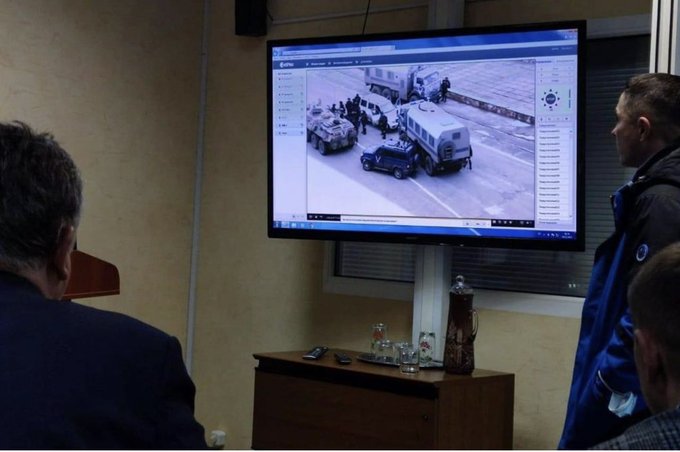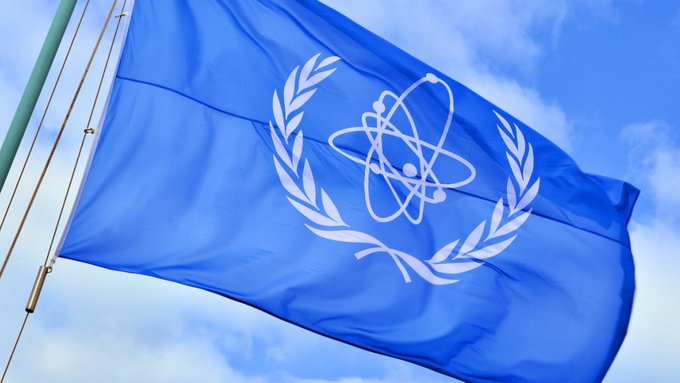
Dogs near the Chernobyl site have developed a ‘super power’ after living so close to the disaster zone.
On 28 April 1986, the flawed Number 4 reactor at the Chernobyl Nuclear Power Plant in Ukraine exploded, releasing at least five percent of its radioactive reactor core into the environment.
Following the disaster, dozens of people died within a few weeks of the explosion, and approximately 350,000 people were evacuated from the area surrounding the plant.

The disaster occurred in April 1986 (HONE/GAMMA/Gamma-Rapho via Getty Images)
Although the explosion happened many decades ago, it still remains relevant to this day, with the event continuing to impact those living nearby.
For example, stray dogs living in the Chernobyl Exclusion Zone (CEZ) – which is the radioactive area surrounding the nuclear plant – may have actually adapted to the toxic environment.
A new study collected blood samples from 116 stray dogs in the area and found they had managed to not only adapt to the environment, but thrive in it too.
“Somehow, two small populations of dogs managed to survive in that highly toxic environment,’ said Norman J. Kleiman, environmental health scientist at Columbia University.
“In addition to classifying the population dynamics within these dogs… we took the first steps towards understanding how chronic exposure to multiple environmental hazards may have impacted these populations.”
The findings were published in the Canine Medicine and Genetics journal back in March 2023.
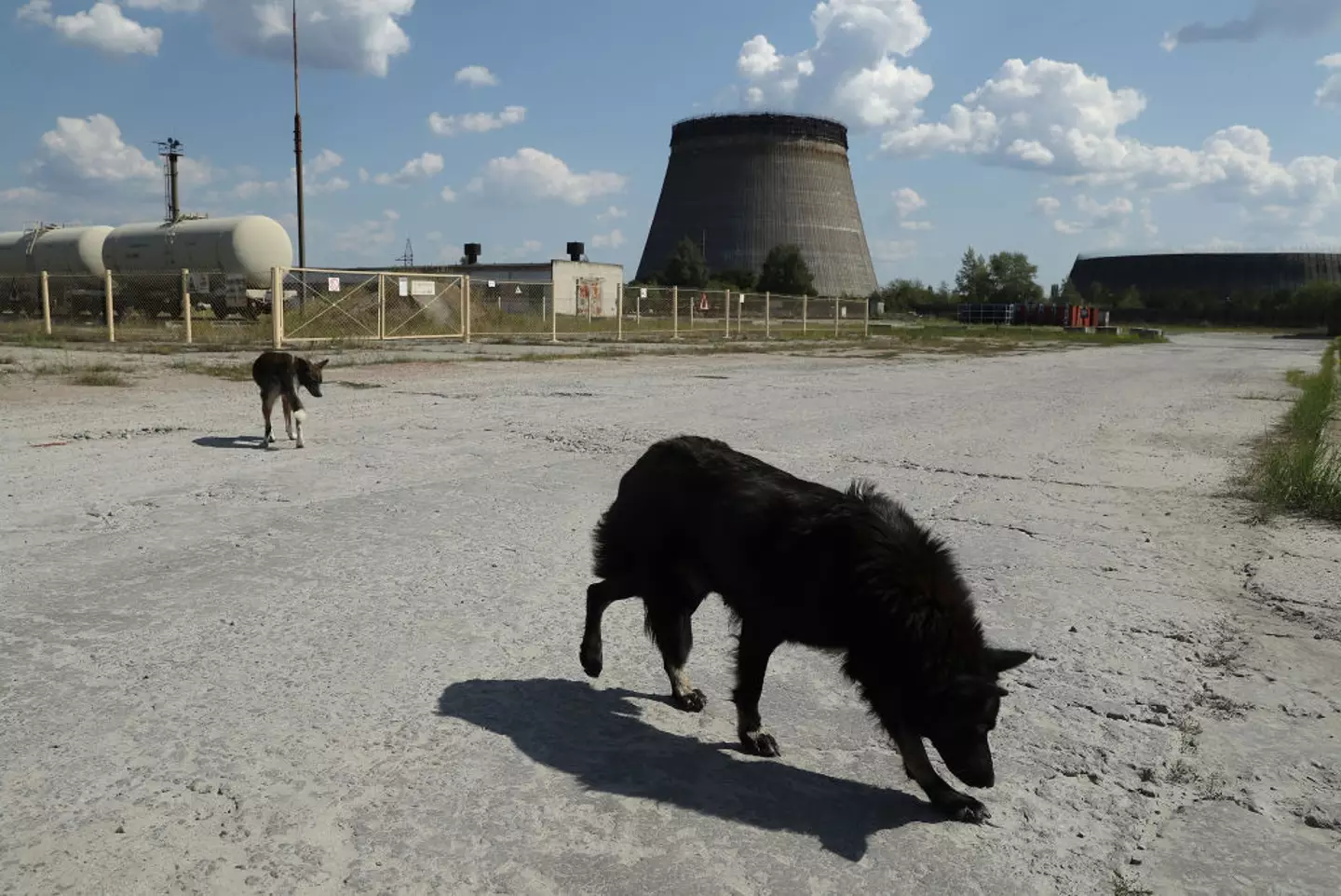
The strays are likely to be offspring from dogs left behind during the evacuation (Sean Gallup/Getty Images)
Scientists found that the stray dogs had a number of genomic locations – which are essentially the positions of genes within chromosomes – that varied from the rest of the genome.
Researchers said that 52 genes ‘could be associated with exposure to the contamination of the environment at the Nuclear Power Plant’.
The findings could suggest that the contamination has caused the dogs – who are likely to be offspring from dogs left behind by the evacuation – to develop mutations allowing them to adapt to their environment.
The study is just some of the research being conducted into the site and whether animals and humans could safely one day return.
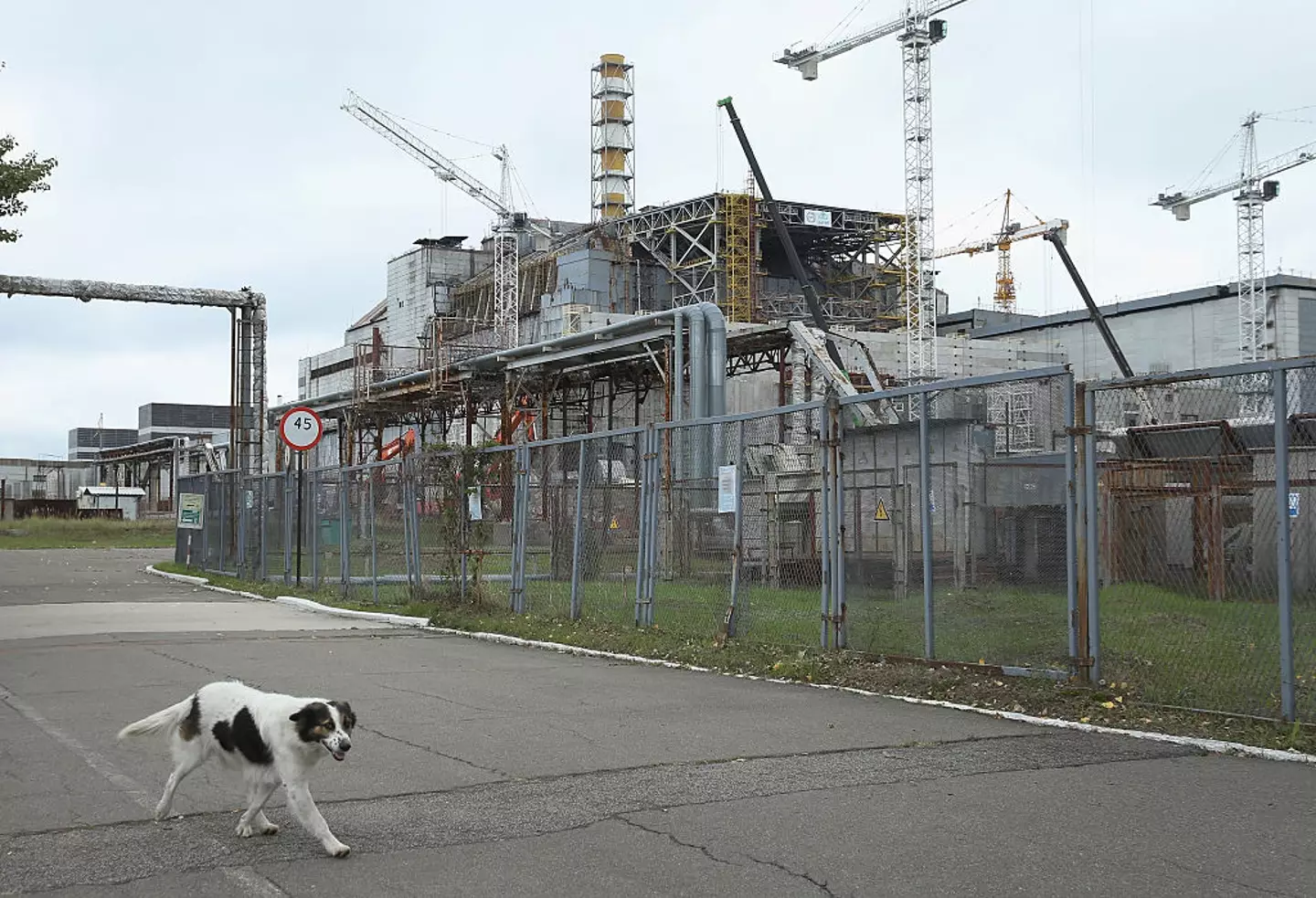
The findings could suggest that the contamination has caused the dogs to develop mutations (Sean Gallup/Getty Images)
Earlier this year, scientists discovered wolves living in the zone were resilient to the radiation that causes a number of different cancers.
Meanwhile, in March, experts visited Chernobyl to investigate nematodes, which are tiny worms living in the soil.
Despite the obvious high radiation levels, the genomes of the worms were not damaged at all.
Dr Sophia Tintor, lead author of the study, said: “Chernobyl was a tragedy of incomprehensible scale, but we still don’t have a great grasp on the effects of the disaster on local populations.
“Did the sudden environmental shift select for species, or even individuals within a species, that are naturally more resistant to ionizing radiation?”
The Chernobyl Exclusion Zone is believed to contain ‘mutant wolves’ that can survive there, despite it being a ‘radioactive’ zone.
Chernobyl is known as one of ‘the world’s worst nuclear accidents’ and despite the horrific accident occurring almost 40 years ago, the effects are still long-lasting.
The deadly explosion that happened in the No. 4 reactor at Pripyat’s Chernobyl Nuclear Power Plant in 1986 saw radiation plague Ukraine and Eastern Europe.
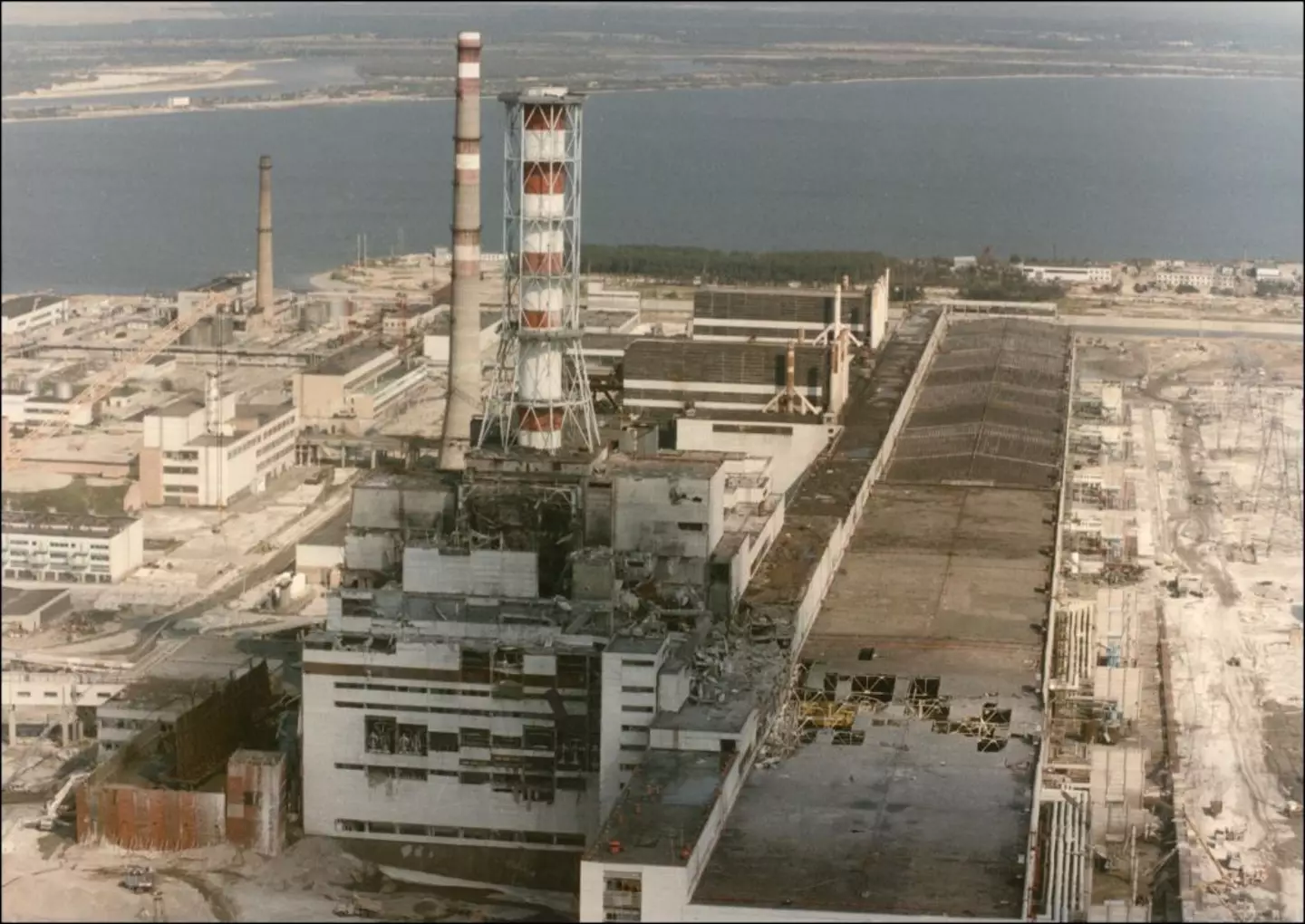
SHONE/GAMMA/Gamma-Rapho via Getty Images
31 people died as an immediate result of the explosion, and despite the residents of Pripyat being evacuated, it has been predicted a further 4,000 people went on to die and suffer from radiation poisoning over the following years.
The Chernobyl Exclusion Zone, one of the most radioactively contaminated areas in the world, has been deserted ever since and only allows visitors for short periods of time due to the risk of cancerous cells being developed in the body as a result of the high radiation levels.
But it turns out the exclusion zone isn’t as deserted as we thought.
Amongst the thriving sanctuary of plants and forests are animals who’ve managed to adapt to the dangerous living conditions – including ‘mutant wolves’.
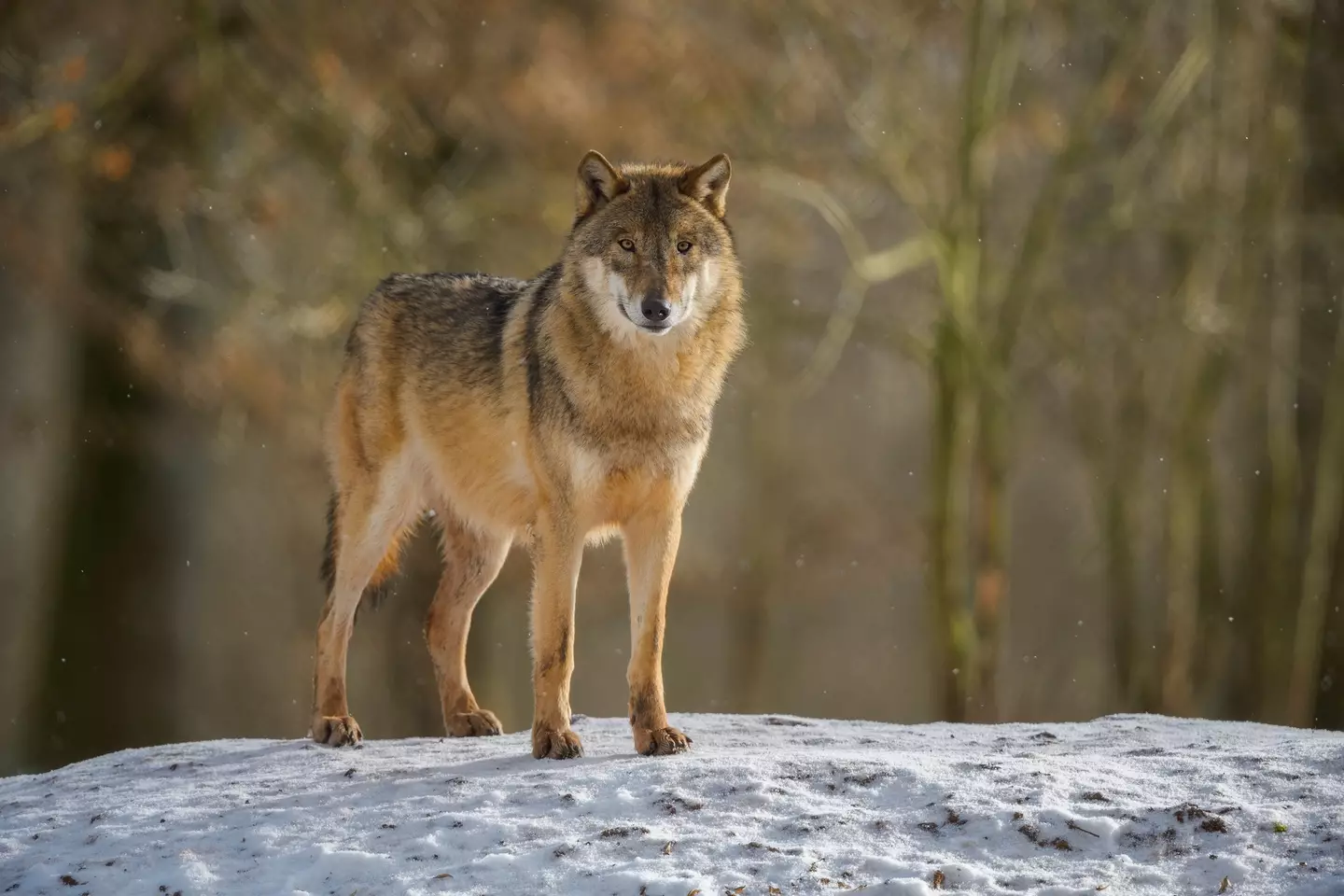
Getty Stock Image
The wolves that currently roam Chernobyl are said to be exposed to 11.28 milligrams of radiation daily for their lifespans – more than six times the legal safety limit for humans.
While it’s not completely clear why or how the wolves have managed to thrive in radiation, it’s believed that they’ve become acclimatized as their immune systems appeared different than normal wolves’ – similar to those of cancer patients going through radiation treatment.
Evolutionary biologist and ecotoxicologist in Shane Campbell-Staton’s lab at Princeton University, Cara Love has been studying the mutant wolves and how they manage to survive in the climate, and presented her research to the Annual Meeting of the Society of Integrative and Comparative Biology in Seattle, Washington, last month were she revealed her findings.
Back in 2014, Love and her colleagues entered the Chernobyl Exclusion Zone and managed to secure GPS trackers to the collars of the wolves, and also took blood from the hounds in an effort to understand their responses to the cancer-causing conditions.
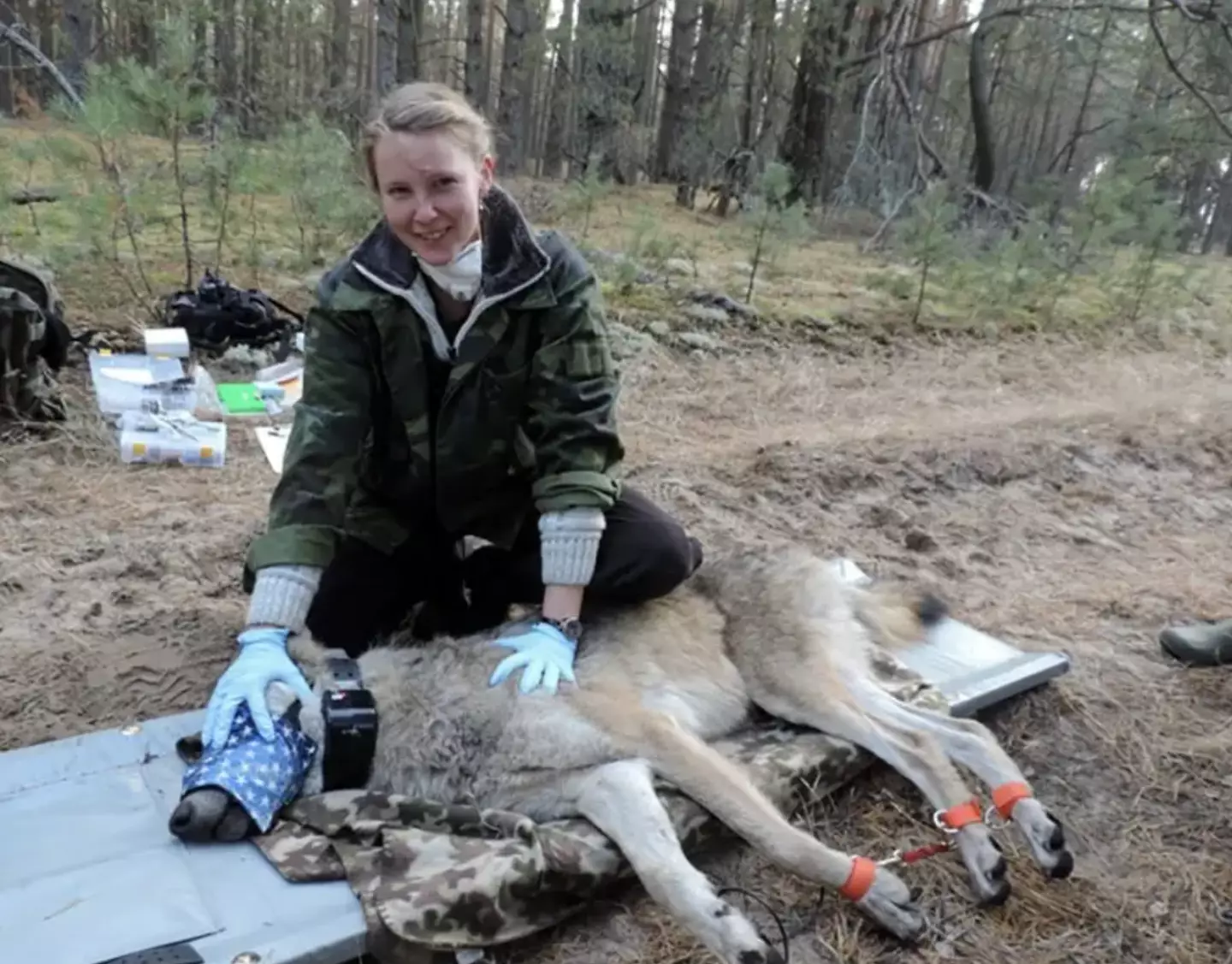
FLCC
The research they’re collecting could be key to examining how gene mutations in humans could increase the odds of surviving cancer — flipping the script on many known gene mutations, like BRCA, that cause cancer.
With the fitted GPS trackers available, the scientists were able to collect data on measurements of how much radiation they can be exposed to.
It’s theorized that the Chernobyl dogs, which are descendants of former pets, may possess cancer resilience.
Featured Image Credit: PBS / Getty Stock Images
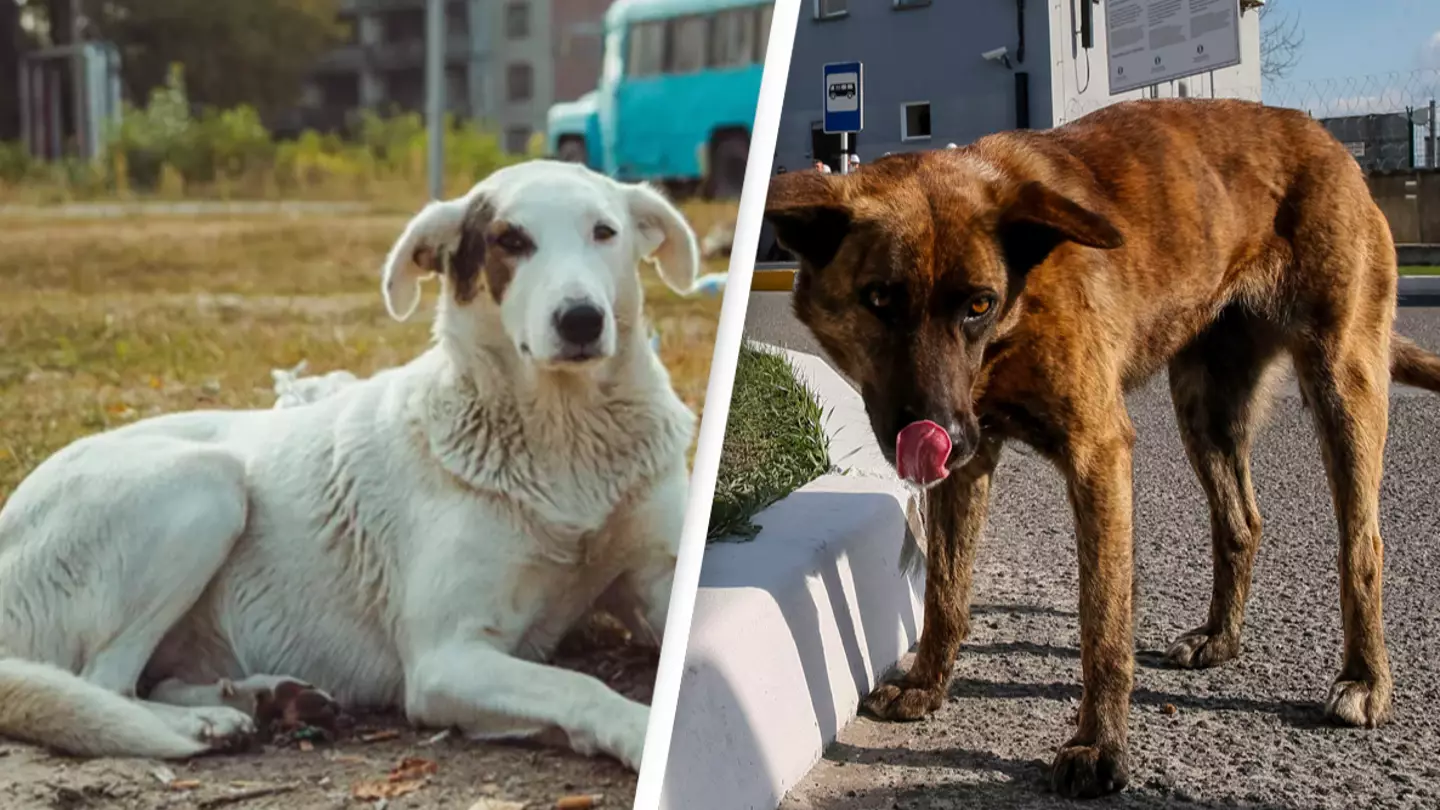
As heartbreaking as it might be to hear, it’s a fact that many of the families living around Chernobyl when the nuclear disaster took place were forced to leave behind their precious pets.
Thousands of people lost their lives as a result of exposure to the radiation leaking from the nuclear power plant, but while wildlife populations in the area were largely devastated, some dogs managed to survive.
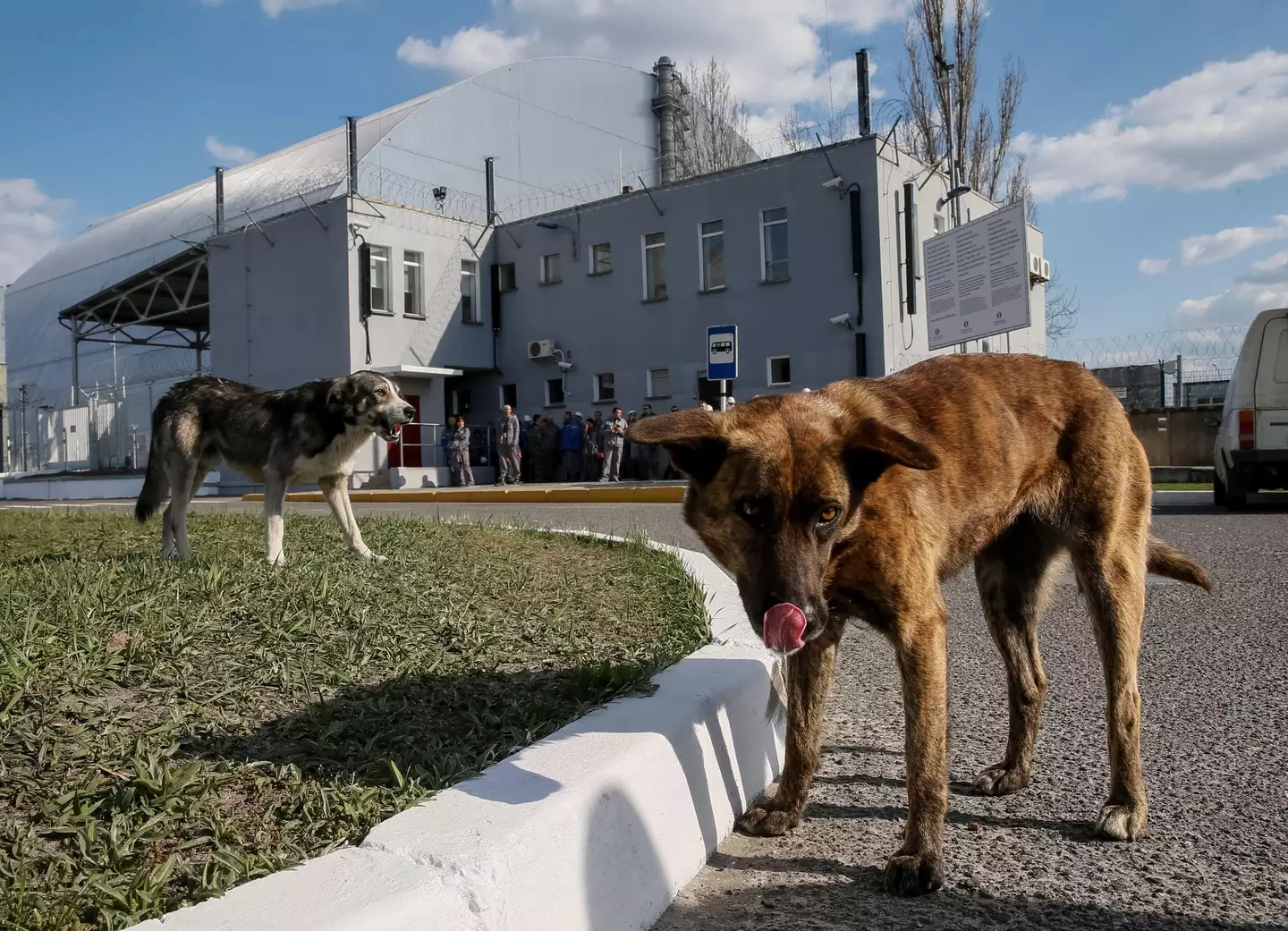
REUTERS / Alamy Stock Photo
Almost 40 years on, the pet dogs are no longer around, but there are still hundreds of wild dogs roaming the area. It was these animals that researchers focused on in the study, which involved looking at blood samples of 302 dogs collected between 2017 and 2019.
All of the animals came from populations living either within the power plant itself, or between 15 and 45 kilometres from the site.
Geneticist Elaine Ostrander, of the National Human Genome Research Institute, described the study as a ‘golden opportunity’ to lay the groundwork for answering the question of: “How do you survive in a hostile environment like this for 15 generations?”
Ostrander explained that scientists initially expected dogs to have intermingled so much over time that their DNA would be very similar.
When looking at the DNA, however, the researchers were able to identify about 15 different family structures which were unique compared with other dogs. It’s thought this is a reflection of the long exposure the dogs have had to ionizing radiation.
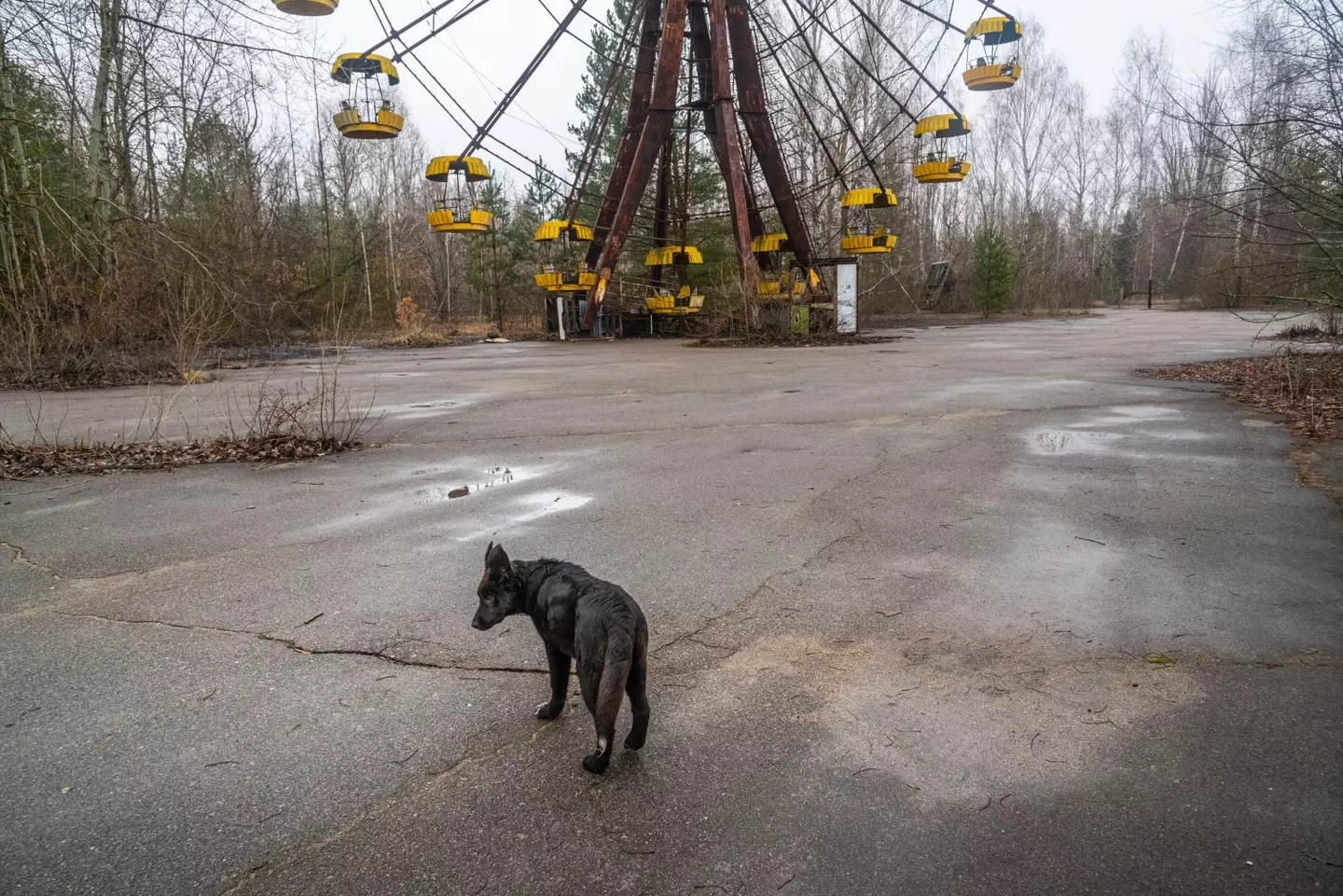
Serkant Hekimci / Alamy Stock Photo
Scientists were also able to identify which dogs lived in areas of high radiation exposure versus those living near low and medium levels of exposure.
Ostrander told IFLScience: “I think the most remarkable thing about the study is that we identify populations of dogs living in and in the shadow of the reactor, and we can tell who those dogs are just by looking at their DNA profile.
“To think of families living in places like near spent fuel rods is incredible and speaks to the resilience of dogs as a species.
“We also find that the dogs living in the exclusion zone now are likely descendants of pets from people that fled the area when the explosion happened. We can see the history of those pets etched in the DNA of dogs living in the exclusion zone today.”
With the initial results in, Ostrander told the Associated Press scientists can begin to look for alterations in the DNA, asking questions like ‘what’s mutated’ and ‘what’s evolved’.
Such research could provide insights as to how humans and animals might survive in a world under ‘continuous environmental assault’.
Featured Image Credit: Sergiy Romanyuk/Shutterstock/REUTERS/Alamy Stock Photo
Russian troops pose a major risk to Chernobyl and could set off a nuclear disaster, experts have warned.
We’re now 23 days into Vladimir Putin’s ‘special military operation’. While shelling and warfare in cities across Ukraine continue to take the lives of civilians and troops, Russian forces are still in control of the infamous plant, ground zero of the worst accident in the history of nuclear power.
Over the past three weeks, reports have emerged of possible radiation leaks and efforts to restore power, in-turn averting ‘the risk of a possible nuclear catastrophe’ for all of Europe.
Olena Pareniuk and Kateryna Shavanova worked at Chernobyl prior to Russia’s invasion, studying microorganisms in the exclusion zone. In an interview with TIME, they discussed the plant, the fallout of any accidents and the dangers of the Russian occupation.
“The vital need is to rotate the staff of the Chernobyl nuclear power plant. The staff, who are still at the Chernobyl nuclear power plant, came in on February 23,” they said.

Alamy
“The enemy has not allowed any opportunity to change the staff, who are psychologically and physically exhausted due to the lack of rotation and the constant pressure caused by armed people.
“This can lead to loss of control over the safety of the facility and the inability to respond to internal and external initial events such as fire, which in turn can lead to severe radiation effects.”
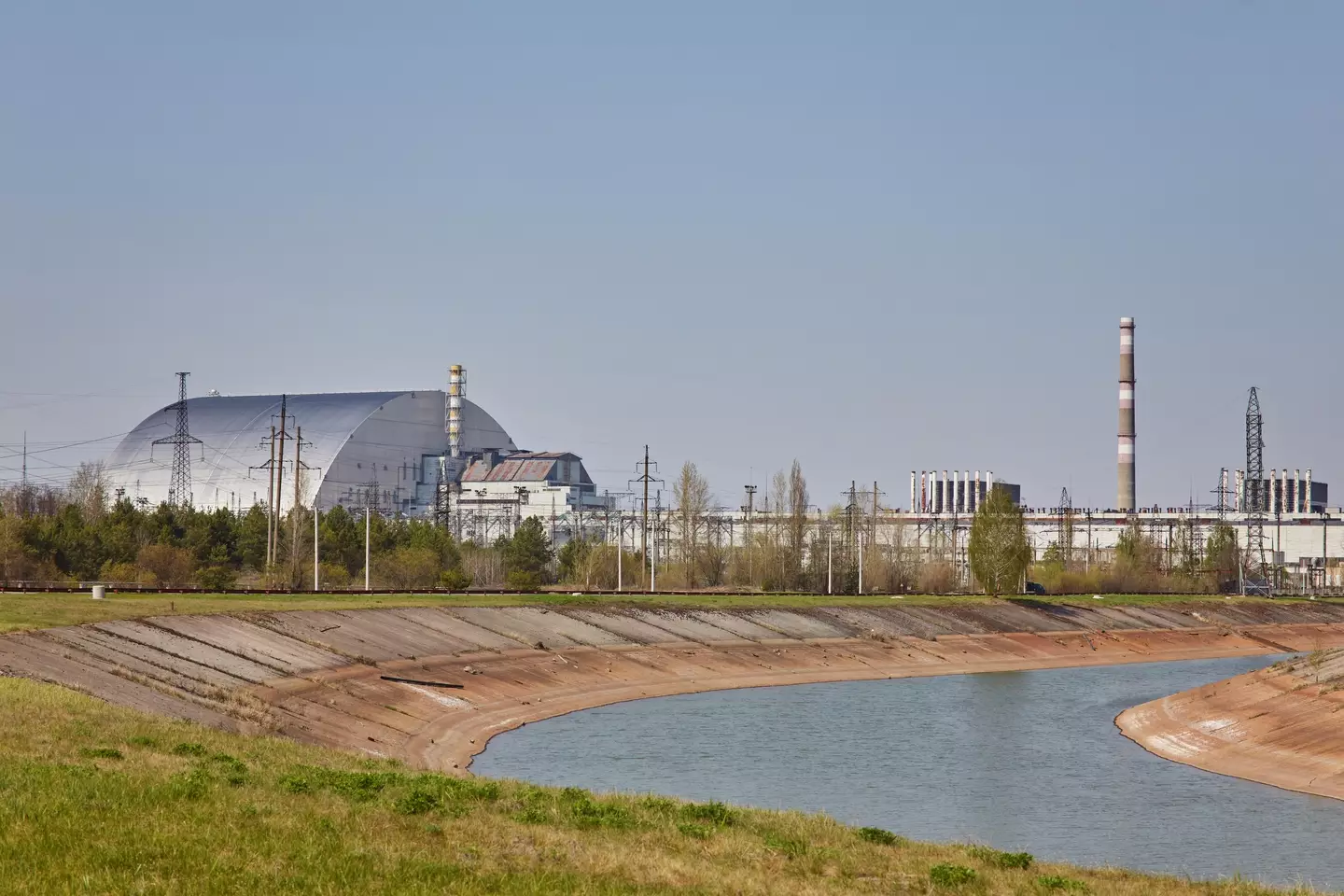
Alamy
This echoes the concerns of an official in-charge of an exclusion zone around the plant, who warned staff being held hostage are on the edge of their ‘human capabilities due to physical and emotional exhaustion’, as per The Independent.
“The main risk of the Chernobyl Exclusion Zone is not radiation, but Russian troops,” Pareniuk and Shavanova said.
They went on to explain how a ‘complete power outage’ could result in ‘disabling the safety of important systems and equipment, in particular: ventilation, heat dissipation, technological, and radiation control systems’.
Inside Chernobyl, 200 staff are now hostages: toiling round the clock at gunpoint on the site of the world’s worst nuclear disaster. They are exhausted, hungry and want to go home. And they are starting to defy their Russian captors. This is their story wsj.com/articles/insid…
“There are long-lived radionuclides in the spent nuclear fuel storage, which in case of an accident can get into the Kakhovka Reservoir, and further along the Dnipro river into the Black Sea.
“A huge area would be contaminated by radiation for thousands of years. If there is an accident with one power unit or one container for spent fuel, depending on the direction of wind the radioactive cloud will affect Russia, Bulgaria, Greece, Romania, and other border countries.”
There’s also the matter of the nuclear reactors at the Zaporizhzhya power plant and the city of Energoda, which are also under Russian control.
“There are seven nuclear sites at Zaporizhzhya: six nuclear power units and a spent nuclear fuel storage facility are equivalent to about 20 Chernobyls,” they said.
“This is a huge amount of nuclear material, which is now out of [Ukraine’s] control, [and] even of the International Atomic Energy Association. This is a danger not only for Ukraine, but to nearby countries.”
Pareniuk and Shavanova believe both areas are under direct threat. “Russian troops continue to grossly violate the requirements of radiation safety and security, which worsens the radiation situation and contributes to the spread of radioactive contamination outside the Chernobyl Exclusion Zone,” they said.
If you would like to donate to the Red Cross Emergency Appeal, which will help provide food, medicines and basic medical supplies, shelter and water to those in Ukraine, click here for more information
They say dogs are a man’s best friend, and this story proves it.
The Tanner Family from Spring, Texas, went to sleep as usual on Friday, August 25, only to be woken up by their dog, Axel, in the early hours of Saturday morning.
The one-year-old border collie was pawing at his owners Amanda and Danies ‘more than normal’ and Danies eventually got up and went downstairs with the pooch, presuming that he was wanting to be let out.
But Axel wasn’t interested in going outside, instead he directed his owner to the bedroom door of 17-year-old Gabriel.
Axel refused to move from the teenager’s door, sparking Danies to check on his son – which is when he realised something was wrong.
Gabriel was slurring his words and said he couldn’t feel the right side of his body, so his parents rushed him off to the emergency room.
Little did they know that their athletic and otherwise healthy son was having a stroke; something which is extremely rare in young people.
Most strokes happen to people aged 65 or over, with only 3.7 percent to 8.5 percent of all strokes occuring in those aged below 45, as per the National Library of Medicine.
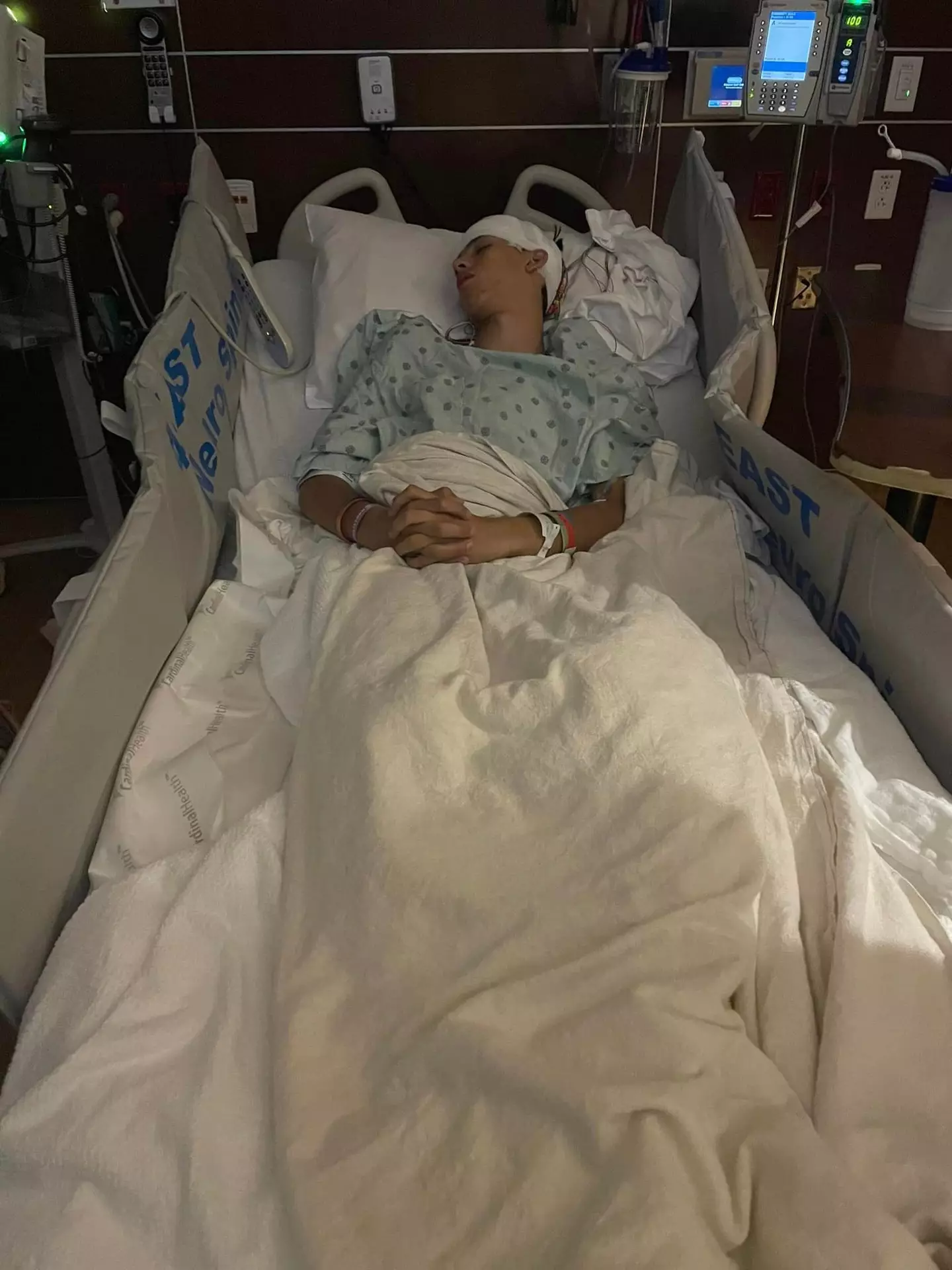
Facebook/Amanda C Tanner
Noting the low chances of her teenage son suffering a stroke, Gabriel’s mother Amanda told the Daily Mail: “I would have never thought a teenager could have a stroke and would have thought he needed more sleep if anything had Axel not alerted us to the issue.”
With Axel’s heroic efforts in mind, Sabih Effendi, a neurosurgeon who treated Gabriel, has credited the family’s pet for making a huge difference to the outcome of Gabriel’s stroke.
“Without that early notification of him getting to the hospital, you really would have had really permanent deficits that would have made him really nonfunctional and unable to live life,” Effendi told The Washington Post.
He added to TODAY: “When somebody’s acutely having a stroke, the neurons are dying.
“[…] If he was not found and another three or four hours went by, there would have been more and more and more brain injury.”

Facebook/Amanda C Tanner
Prior to his stroke, Gabriel said he had a headache but simply went to sleep not thinking much of it.
But when he was woken up by his dad, the 17-year-old couldn’t lift up his right arm or grip onto Danies’ arm.
Following Gabriel’s hospital admission, it was found that the stroke was a result of a tear of an artery that delivers blood to the brain.
The tear was spontaneous and Gabriel was put on blood thinners to help.
He also went on to have physical, occupational and speech therapy.
By September 4, he’d regained mobility in his right arm and was discharged form hospital a few days later.
In a Facebook post at the time, Amanda said that her son was to ‘continue with therapy 3 times a week but now with mom and dad caring for him 24/7 from home’.

